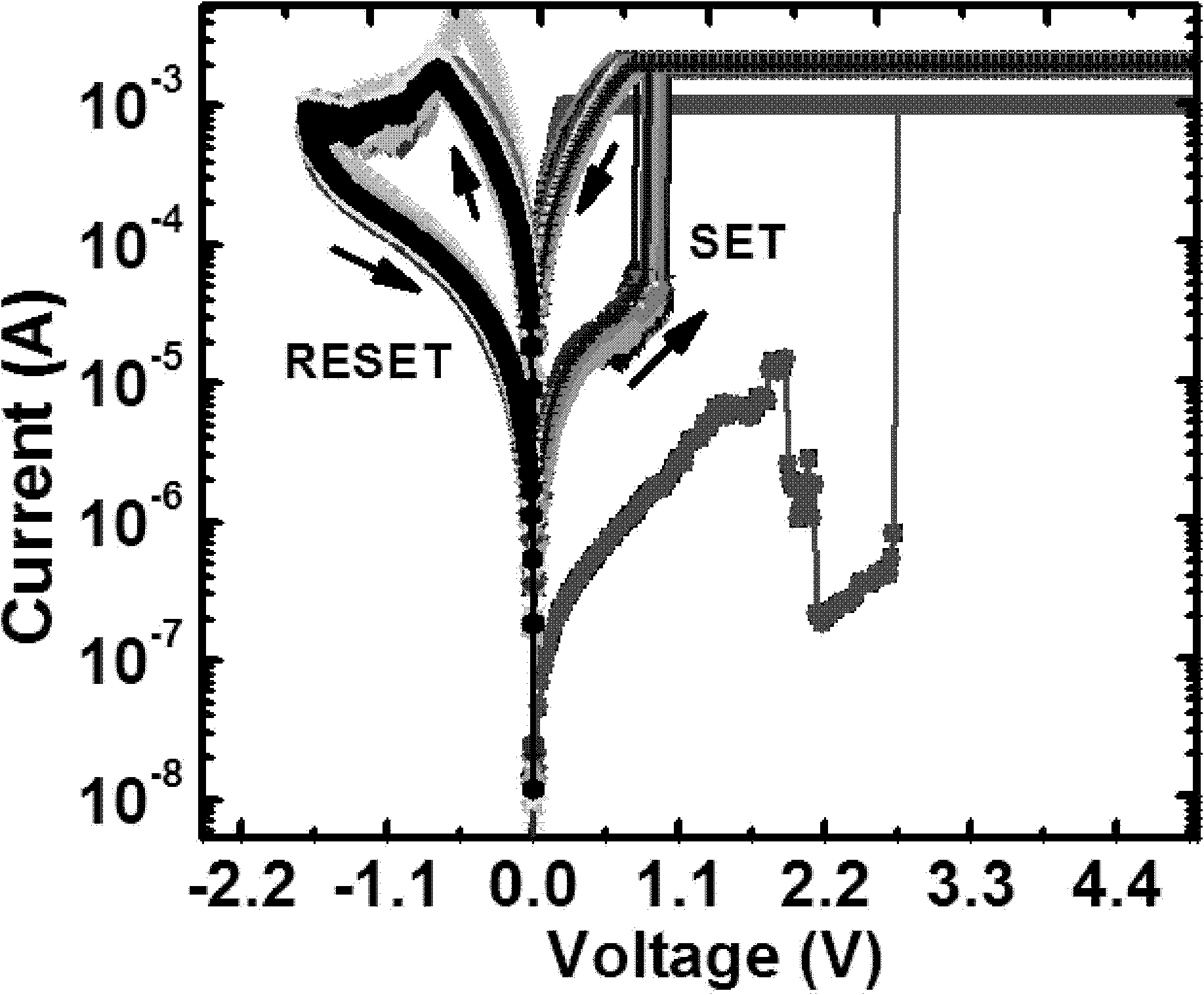Method for preparing resistive random access memory
A resistive variable memory and resistive variable technology, applied in the direction of static memory, digital memory information, information storage, etc., can solve the problems of obvious parasitic effects of devices and incomplete isolation between devices, so as to reduce process complexity and ensure The effect of complete isolation and great application prospects
- Summary
- Abstract
- Description
- Claims
- Application Information
AI Technical Summary
Problems solved by technology
Method used
Image
Examples
Embodiment 1
[0025] The schematic diagram of the cross-sectional structure of the resistive memory made in this embodiment is as follows: figure 1 As shown, the preparation process of the resistive memory in this embodiment is described below in combination with the schematic cross-sectional structure:
[0026] 1) First, on the silicon substrate 1, a layer of Ta metal 200nm is prepared by using a physical vapor deposition (PVD) method or a film-forming method in other IC processes;
[0027] 2) Using standard photolithography and lift-off techniques to pattern the bottom electrode to form the bottom electrode 2;
[0028] 3) Using dry oxygen oxidation method, in a high-temperature oxidation furnace, oxidize at 400°C for 2 hours to form a 10nm TaOx (X=1-2.5) film wrapped around the bottom electrode;
[0029] 4) Define the bottom electrode lead-out hole by photolithography and etching;
[0030] 5) Same as the preparation of the bottom electrode, the top electrode TiN and its protective elect...
Embodiment 2
[0035] 1) First, a layer of W metal 200nm is prepared on the silicon substrate 1 by using a physical vapor deposition (PVD) method or a film-forming method in other IC processes;
[0036] 2) Using standard photolithography and lift-off techniques to pattern the bottom electrode to form the bottom electrode;
[0037] 3) Using the wet oxygen oxidation method, oxidize in an oxidation furnace at 400°C for 3 hours to form a 10nm WOx film (X=1-3) wrapped around the bottom electrode;
[0038] 4) Define the bottom electrode lead-out hole by photolithography and etching;
[0039] 5) Same as the preparation of the bottom electrode, the top electrode TiN and its protective electrode Pt are prepared by PVD method or other film-forming methods in the IC process.
[0040] The resistive change memory (W / WOx / Cu) prepared in this embodiment has similar resistive change characteristics, erasable characteristics and retention characteristics at high temperature as that of the resistive change m...
PUM
| Property | Measurement | Unit |
|---|---|---|
| thickness | aaaaa | aaaaa |
| thickness | aaaaa | aaaaa |
Abstract
Description
Claims
Application Information
 Login to View More
Login to View More - R&D
- Intellectual Property
- Life Sciences
- Materials
- Tech Scout
- Unparalleled Data Quality
- Higher Quality Content
- 60% Fewer Hallucinations
Browse by: Latest US Patents, China's latest patents, Technical Efficacy Thesaurus, Application Domain, Technology Topic, Popular Technical Reports.
© 2025 PatSnap. All rights reserved.Legal|Privacy policy|Modern Slavery Act Transparency Statement|Sitemap|About US| Contact US: help@patsnap.com



